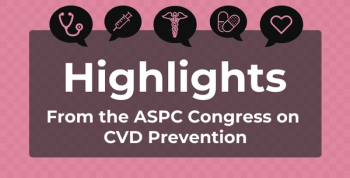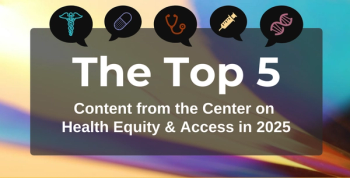
Absence of Prescription Coverage Could Prove Catastrophic in Cancer, Study Shows
Eligibility for prescription coverage and family income significantly influenced women's decisions to continue hormonal therapy and prevent recurrence of breast cancer, the authors found.
A study conducted among breast cancer patients
Published in Breast Cancer Research and Treatment, the authors conducted a retrospective analysis based on surveys filled out by 712 women diagnosed with breast cancer.
The women were approached by the researchers 9 months following their diagnosis and again at the 4-year mark. The primary outcome being evaluated was initiation and continuation of prescribed hormonal therapy (which is usually administered for 5 to 10 years), which reduces the risk of cancer recurrence in women with estrogen- or progesterone-positive breast cancer by as much as 50%.
The study showed that 90% of women who were eligible for prescription drug coverage started their recommended hormonal treatment as prescribed; however, the number dropped down to 81% at the end of study period. Of the cohort whose insurance plan did not include prescription drug coverage, 82% started hormonal therapy (requiring them to cover the cost out of pocket), and by 4 years, only 66% remained on the treatment. Overall, the authors observed a significant influence of family income on the women’s decision to initiate and continue hormonal therapy. Women with an annual household income of less than $40,000 were about 40% as likely as women with an annual household income of more than $70,000 to continue treatment.
“When someone thinks about coverage for high cost care, they're usually thinking about that trip to the hospital that costs $80,000 that could leave them bankrupt. But the fact is that the cost of prescription medicines—even fairly low cost medications—can also be 'catastrophic',” Bradley adds.
With President Obama’s renewed attention to Precision Medicine, and provisions of the Affordable Care Act, changes within insurance benefit are imminent. However, there are certain caveats to deal with. For example, in addition to being expensive, many of the targeted agents are oral medications, to be self-administered at home, as opposed to an infusion that needs a patient to visit the clinic. This can result in adherence issues. Patients can skip doses or not fill a prescription, which in turn can result in poor outcomes.
Pointing out that there’s plenty of evidence showing that if people feel that a drug is too expensive, they stop taking it, Bradley says, “This study suggests that reluctance to insure prescription drugs may result in increased recurrence and poor survival among women with breast cancer, one of the largest groups of cancer survivors.”
Newsletter
Stay ahead of policy, cost, and value—subscribe to AJMC for expert insights at the intersection of clinical care and health economics.








































